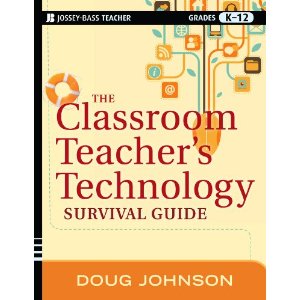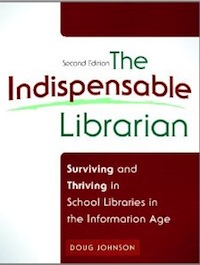Rubrics for Leadership
Rubrics for Leadership: What Technologically Literate Superintendents, Principals and Directors Should Know and Be Able to do with Information Technologies
The School Administrator, April 1999.
with Eric Bartleson, Ph.D., Minnesota State University, Mankato MN
A long-term technology goal for any school district should be to use technology to improve administrative effectiveness through efficient communication, planning, and record keeping.
Like any large organization, schools can use technology to improve daily operations. Administrative software packages keep student records, figure payroll, generate state reports, and schedule classes. Telephones, voice mail, e-mail, intranets and websites use the power of networking to collect, distribute and update information. Web pages, desktop published documets, and video productions inform our communities about school activities. Administrators can use brainstorming and organizational technology tools to more effectively plan and lead.
Evaluating the impact of technology for administrative uses involves evaluating the cost effectiveness and reliability of data processing. This means looking at the ease of use, minimization of manual data input, and flexibility of report generation. For optimal use of technology for administrative support, districts need to plan for:
- powerful, stable voice, video and data networks that reach into every classroom and office
- shared databases for student data management, finance, payroll, and scheduling accessible from all desktops
- shared calendars and facilities schedulers
- district produced information accessible electronically – through websites, listservs, public access television, or desktop published mailed documents
Any communication audit a district undertakes certainly needs to include good questions about how information is shared electronically. Are the technologies available in sufficient quantities so digital formats can begin to replace printed ones? Can we keep our curriculum guides on a school Intranet? Can we replace the daily paper bulletin with a mailing list? Can the information previously delivered to the office by scan sheet now be sent through the network? No cost savings will be achieved until that happens.
But planning for good administrative use of technology also requires that administrators can assess their own technological skills so that they can plan for their own professional development needs.
The rubrics below (modeled after teacher computer use rubrics, see Johnson, D. The Indispensable Teacher’s Guide to Computer Skills. Linworth, 1998) can serve two purposes. By asking administrators to complete an anonymous self-assessment using the rubrics before a learning opportunity and again after that opportunity , the district can judge the effectiveness of its staff development efforts. These opportunities might include classes, professional growth plans, or workshops. Simple graphs showing the percentage of training participants at each level pre and post training can be constructed. These results can then be shared with the staff development committees and district decision-makers.
The rubrics also serve to provide a “road map” for principals and directors wanting to improve their own technology skills. By examining the specific skills described, administrators know in what areas they need to continue to see additional training or practice.
Below are both the instructions to administrators for completing the self-assessment and the rubrics themselves. Please feel free to use and modify the rubrics for your district’s specific needs and as technology changes.
Each of the ten rubrics has three levels:
Level 1: Minimal use
Level 2: Mastery
Level 3: Advanced
Prior to training, we assumed most administrators will be at level 1, and training efforts should be designed with that assumption. By the end of the training, administrators would be at level 2 or 3 in most skill areas.
Self-Evaluation Rubrics for Basic Administrative Technology Use
Please judge your level of achievement in each of the following competencies. Circle the number which best reflects your current level of skill attainment. (Be honest, but be kind.) At the end of the training program, you will be asked to complete the same set of rubrics, which will reflect your level of skill attainment at that time. (Level 2 is considered mastery.) This tool is to help measure the effectiveness of our training program, and to help you do a self-analysis to determine the areas in which you should continue to learn and practice. Keep a copy of these rubrics to refer to during the training.
(See 2013 version here.)





Reader Comments